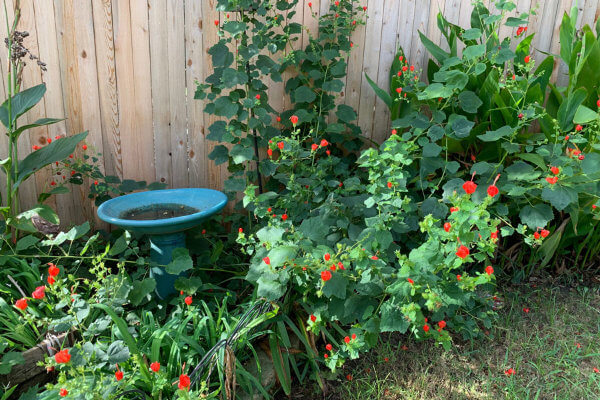5 Potential Water Sources in Your Yard That Attract Mosquitoes
It’s the most frequent recommendation we make to MosquitoTex customers: If you want to proactively help reduce the mosquito population in your yard, you need to avoid having any amount of standing water around your homestead. All it takes is one ounce of water—about a capful—for a mosquito to breed and lay hundreds of eggs. Those little “wigglers” you sometimes see in small pockets of standing water are, in fact, mosquito larvae. By not keeping an eye on potential sources of stagnant water around your property, you risk unintentionally inviting mosquitoes to your yard by providing them with an attractive breeding spot.
Here are 5 common sources of standing water that can easily attract mosquitoes to your yard:

1) Bird Baths
A lot of homeowners and landscape afficionados love a good bird bath as an accent to a flower bed or other area of their yards. Unfortunately, if a bird bath is tucked away somewhere that’s not regularly visible, it’s easy for stagnant water to build up and go unnoticed—except by your mosquitoes, of course. If you proactively fill your bird bath, you should change out the water every 3-4 days to prevent it from getting stagnant. Additionally, anytime it rains—even a light drizzle—you should check on your bird bath afterward and empty out any excess water that may have collected.
2) Empty buckets and flowerpots
There’s typically an area somewhere around a homestead that becomes a small dumping ground for unused yard items. Beware that this out of sight and out of mind approach can end up biting you—mosquito biting you, to be specific. These spots of discarded yard items like empty buckets, flower pots, plant saucers, wheel barrows or other empty containers can easily hold small amounts of water that go unnoticed for weeks, all while providing a perfect hidden breeding ground for your mosquitoes.
3) Toys and recreational yard items

If you have children and there’s a collection of toys that end up strewn around your yard for long periods of time when they’re not in use, then this mosquito suppression tip is for you. Basically, anything left lying around your yard that has any level of potential to collect water should be checked on occasionally and emptied out if needed.
Remember that toy dump truck you bought for your little one? If you haven’t seen it in several months, there’s a chance it’s hiding in the corner of your yard with a miniature truck bed full of water. Sandbox covers also make for a great spot where water typically collects after it rains, as do items like children’s playsets and their many amenities, trampoline padding, or even the molded plastic base of a moveable basketball goal that’s sitting just off your patio or driveway.
4) Faulty irrigation
We all like a lush green landscape, but overdoing it with you sprinkler system can result in damp soil or standing water that has gradually collected in lower areas of your yard. When this happens, you might as well hang an ‘Open for Mosquito Business’ sign, because your local mosquitoes love the damp and boggy spots that can unknowingly spring up in shaded areas. Be mindful of those tucked away spots where your irrigation system may just be the culprit behind your unwelcome mosquitoes. Also, be sure to quickly repair any broken or leaking sprinkler heads, because these undoubtedly lead to small spots of pooling water in the immediate area—or, another mosquito swimming hole.
5) Rain gutters
This is a big one, and usually the most hidden spot for mosquitoes overall. When we hear from homeowners who say they’ve done everything they can think of to avoid attracting mosquitoes around their yard but are still getting swarmed, it’s not uncommon for us to find that they have clogged rain gutters. Leaves and other debris that has collected in the gutters results in standing water, at which point you’ve created a perfect hidden mosquito habitat. The solution is simple—clean out your rain gutters! We know, it’s a messy job and not exactly a fun weekend project. But clogged rain gutters may very well be the largest mosquito attractant in your yard, so cleaning them out is a must. There are also service providers who will do this for you. Plan on cleaning out your gutters at least once a year. Do it after the spring bloom, which tends to catch the last of the pollen buds that fall during that time.
All of this talk about standing water around your homestead and the potential for attracting mosquitoes can be summed up in one main tip for homeowners—be vigilant. Keep an eye on those bird baths, unused buckets, strewn about yard items, faulty sprinkler heads and clogged rain gutters, and be sure to take corrective action when needed. Having your yard sprayed for mosquitoes is a great first step, but you can also play a role in your desired mosquito eradication efforts by simply taking action to help reduce potential spots around your yard where stagnant water may be lurking.
That’s what I’m talkin’ about!



